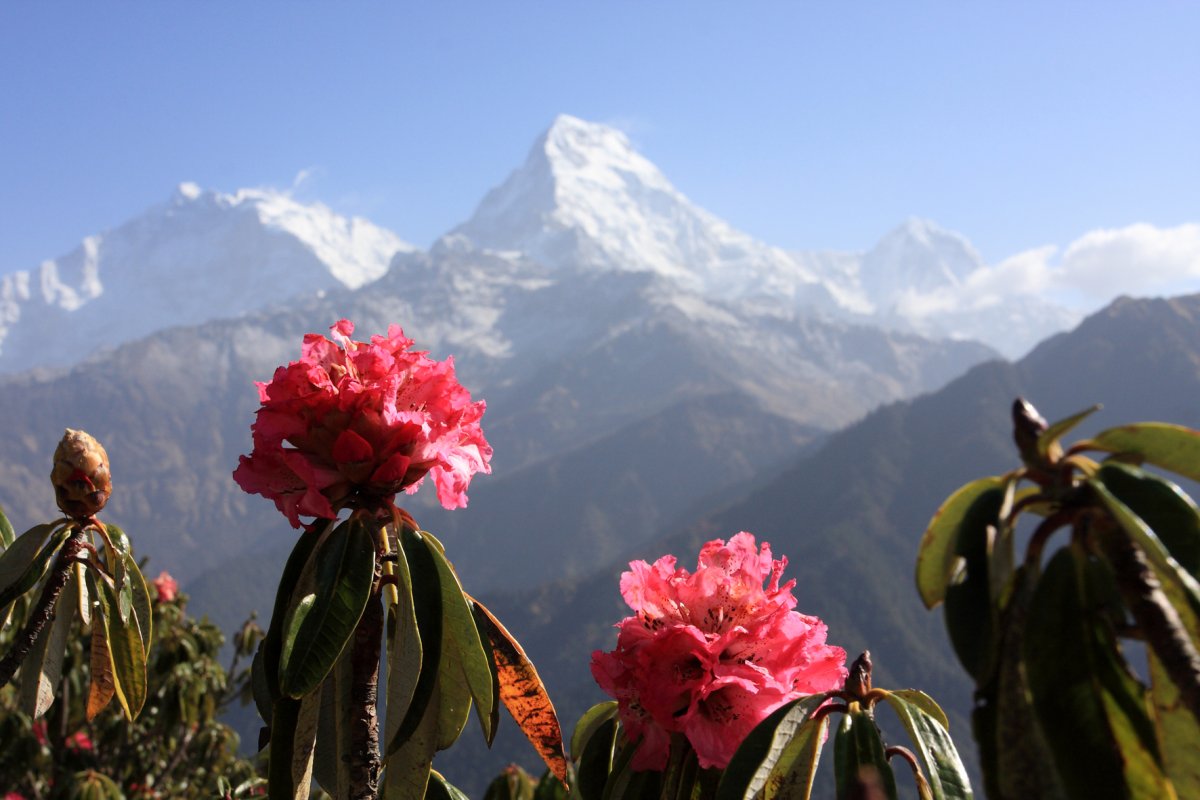Plantlife is growing higher up Mount Everest (and other parts of the Himalayas) than it did in the past, say scientists writing in Global Change Biology—a trend that may reflect temperature rises.
The changes to plant growth have likely affected carbon and water cycles—environmental trends that are likely to impact those living downstream. How exactly it will do so is less certain.
While past research has focused on glacial melt and snow cover, researchers from the U.K. and China used satellite imagery to spot changes to the subnival ecosystem: the area between the treeline and snowline.
This is a region characterized by the presence of small plants, like shrubs and mosses, and seasonal (but not permanent) snow cover. The researchers found these ecosystems cover five to 15 times the amount of landmass as areas of glaciers and permanent snow cover, highlighting its importance.
In this study, researchers focused on three sections of the Hindu Kush Himalaya (HKH), a range that stretches from Afghanistan to Myanmar.
Satellite data collected between 1993 and 2019 allowed scientists to monitor how plant cover changed over a period of 25 years at elevations above 4,150 meters (tree level).
The data shows a weak positive increase in the amount of submnival vegetation since 1993, with the most noticeable trends taking place at heights 5,000 to 5,500 meters above sea level.
The weakest trends were noted at elevations of 5,000 to 6,000 meters. The researchers suggest this might be caused by lower temperatures and steeper slopes that face more disturbance from rockfalls and landslides (which themselves may become more common with climate change).
To understand the exact mechanisms driving these changes, more research is needed, the study's authors say. But climate change is mentioned as a factor.
"My initial guess would be that the primary driver is temperature limitation being removed," joint first author Karen Anderson, a geographer at the University of Exeter in the U.K., told New Scientist.
"Whether or not plants could grow on the peak of Everest, I think that's probably unlikely within our lifetime or even within 100 years."
Whatever is causing plant cover to expand, it will likely have a domino effect, impacting other aspects of the ecosystem like the water and carbon cycles, researchers say. This could have a detrimental impact on the millions of people who live downstream and rely on the Himalayas for their livelihood.
Previous research has shown that the Himalayas are losing 20 inches of ice each year and have experienced nearly 2 F since 1900—more than the rest of the world, which has seen 1.4 F of warming.

Uncommon Knowledge
Newsweek is committed to challenging conventional wisdom and finding connections in the search for common ground.
Newsweek is committed to challenging conventional wisdom and finding connections in the search for common ground.
About the writer
To read how Newsweek uses AI as a newsroom tool, Click here.






